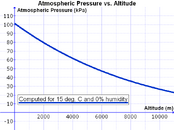I am not sure this belongs into "advanced" it does seem a rather basic question, on the other hand it might not really hold interest for too many users.
In the altitude speciality course I did this weekend we talked about pressure groups on arrival at the dive site.
Coming from under 300m above sealevel 2 pressure groups per 300m ascent are added.
So a diver living at 280m who went to 750m would use pressure group F at the beginning of the "surface interval".
But a diver acclimatized at 1480m and ascending to 1950m would have to add 4 pressure groups per 300m placing him in pressure group L. (we calculated this example)
Can anyone explain the rationale behind this rule? After all the ascent is 470m in either case.
My diving instructor said it was for safety reasons.
I would like to know the background for this recommendation to understand it.
In the altitude speciality course I did this weekend we talked about pressure groups on arrival at the dive site.
Coming from under 300m above sealevel 2 pressure groups per 300m ascent are added.
So a diver living at 280m who went to 750m would use pressure group F at the beginning of the "surface interval".
But a diver acclimatized at 1480m and ascending to 1950m would have to add 4 pressure groups per 300m placing him in pressure group L. (we calculated this example)
Can anyone explain the rationale behind this rule? After all the ascent is 470m in either case.
My diving instructor said it was for safety reasons.

I would like to know the background for this recommendation to understand it.





